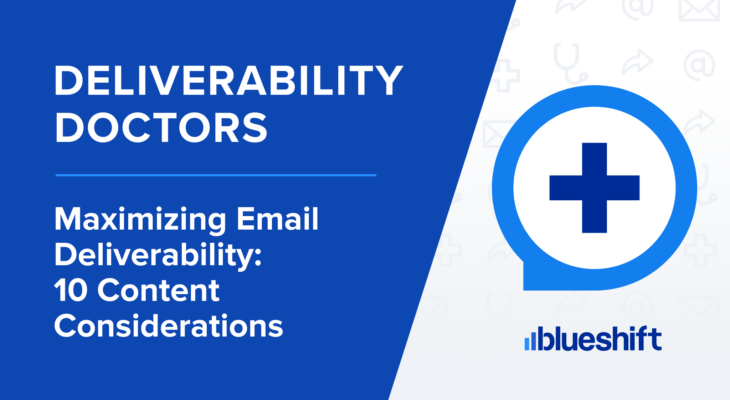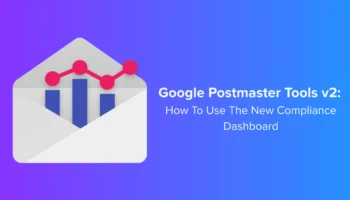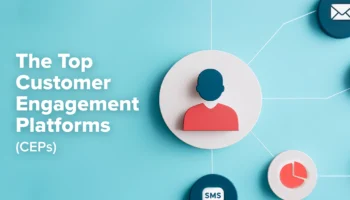In this blog, we will review key areas that you should double-check when setting up your organization’s email marketing campaigns (you may also refer to our Email Dos and Don’ts blog). While it may be tempting to rush through the content creation process, this stage is pivotal as it represents the culmination of all your efforts with your subscribers. Your content holds the highest level of actionable potential within your entire email marketing program. Whether you aim for your subscribers to make a purchase, subscribe to a service, visit your website, or download your app, their actions often depend on the content you deliver to them. That’s why it is imperative to allocate more time and effort here, ensuring the creation of high-quality content while smelling the digital roses.
Maximizing Email Deliverability: 10 Email Content Considerations

1. Maintain a Balanced Image-To-Text Ratio
In general, the image-to-text ratio refers to the balance between the number of images and the amount of text used in an email. This has become a crucial consideration as spam filters now screen email content before deciding whether to place it in the inbox, spam folder, or block it altogether. To bypass the ISP filters, spammers have become creative and primarily use images in email bodies to deceive spam filters. By doing so, they prevent the filters from scanning the text and flagging malicious content. To safeguard users, many ISP filters have implemented the image-to-text ratio as an important factor in determining the fate of an email. This technology is still widely used today, and although filters can be more forgiving based on your IP and domain reputation, it is advisable to start with a 50/50 balance and test your organization’s specific tolerance for images.
2. Keep Email Source File Below 102kb
Always strive to keep the actual email file as short as possible, as the maximum file size threshold for the entire email is 102kb. Exceeding this threshold may cause your email to be clipped in certain email clients or ISPs, particularly Gmail. By default, Gmail does not allow more than 102kb of the source file and will truncate a portion of your email. This can result in an increase in spam complaints and a potential decrease in reputation, as it is likely that your footer or unsubscribe button will be affected by the clipping.
3. Keep Images File Below 50kb
Using images with a file size of 50KB or less can significantly enhance the user experience, deliverability, compatibility, and overall efficiency of your email campaigns. By optimizing your images for email, you can guarantee that your subscribers receive high-quality, engaging content that is effortlessly accessible and viewable. Images with larger file sizes may take longer to load, and it’s worth noting that the majority of spam filters tend to favor smaller file sizes.
4. Keep Emails Short, Easy to Digest, and Mobile-Friendly
Clear and concise emails are often more effective in delivering your message. Subscribers have short attention spans, so keeping emails brief increases the likelihood that your message will be read and understood in its entirety. Lengthy emails can be challenging to digest, requiring excessive scrolling or zooming, which detracts from the overall user experience. While it is important to optimize your email content for all devices, we recommend paying close attention to the mobile format.
5. Talk About Benefits, Not Just Features
One of the key ways to grab the subscriber’s attention is by focusing on what they want, rather than solely emphasizing what you deliver. Benefits that speak to the emotional needs and desires of your target audience can foster stronger emotional connections between your brand and subscribers. When subscribers feel emotionally connected, they are more inclined to remain loyal to your brand and become advocates for your products or services. This is an important strategy for building longer-term relationships and engagement with your subscribers.
6. Use Focused and Clear CTAs
A focused CTA (call to action) delivers a clear and concise message that directs the reader to take a specific action, such as making a purchase, signing up for a newsletter, or downloading an e-book. This approach eliminates confusion and provides a clear purpose for the email.
7. Steer Clear of Unnecessary Links
Spam filter algorithms are designed to identify and block emails that feature an excessive number of links, particularly those that appear overly promotional. Including unnecessary links in your email can trigger spam filters, resulting in your message not reaching your audience’s inbox. Moreover, it can clutter the email, making it visually unappealing and challenging to read. Additionally, it is important to carefully review any third-party links that do not directly lead back to your website, as those pages carry their own reputation weight and may potentially impact your deliverability negatively.
8. Avoid Using a No-Reply Email Address
Using a no-reply email address can make your brand appear unapproachable and disengaged. Although unintentional, this practice sends a message that you do not value the opinions or feedback of your customers, potentially resulting in reduced engagement and loyalty. Furthermore, some email providers automatically filter out emails sent from a no-reply address, which can have a negative impact on your email deliverability. This can reduce the effectiveness of your email marketing campaign and prevent your message from reaching your audience’s inbox.
9. Include ‘View in Browser’ and Unsubscribe Options
Including a “View in Browser” link at the top of the email enhances convenience for subscribers, enabling them to easily access the email at a later time or on a different device. They can easily bookmark the link, forward it to themselves, or open the email in a web browser, ensuring access to the content regardless of their email client or settings. On the other hand, offering an unsubscribe option at the top of the email helps prevent individuals from marking it as spam when they are no longer interested.
10. Avoid Using Spammy Keywords
The presence of spammy keywords in emails can have a detrimental effect on the success of your efforts. Email clients and mailbox providers employ spam filters to examine email content for specific keywords or phrases that are commonly associated with malicious senders and bad actors. If your email includes an excessive number of spammy keywords, it may trigger the spam filter and hinder the delivery of your email to its intended recipient. This can not only cause problems with the email at hand but also damage the sender’s reputation for future sends.
While there is no one-size-fits-all approach, the key elements discussed in this article should assist you in creating ideal content for your email marketing campaign. Your ultimate objective should be to make the email feel like a two-way communication. By consistently monitoring your email metrics and analyzing customer feedback, you will gain insights into what resonates most effectively with your audience. This, in turn, will enable you to refine your email marketing strategy to achieve improved engagement and conversions.
Looking to expand your knowledge on optimizing email deliverability? Dive into the Blueshift Deliverability Doctors blog series for more insights.


